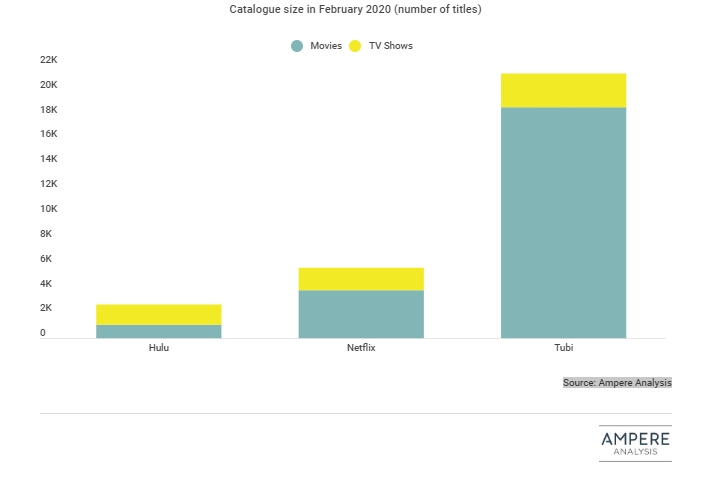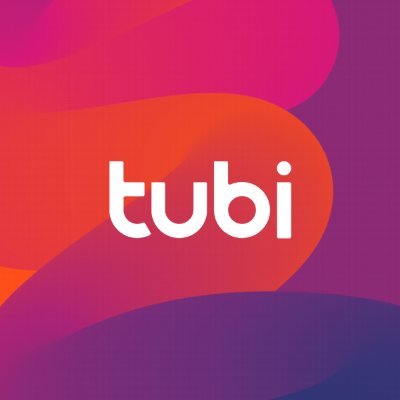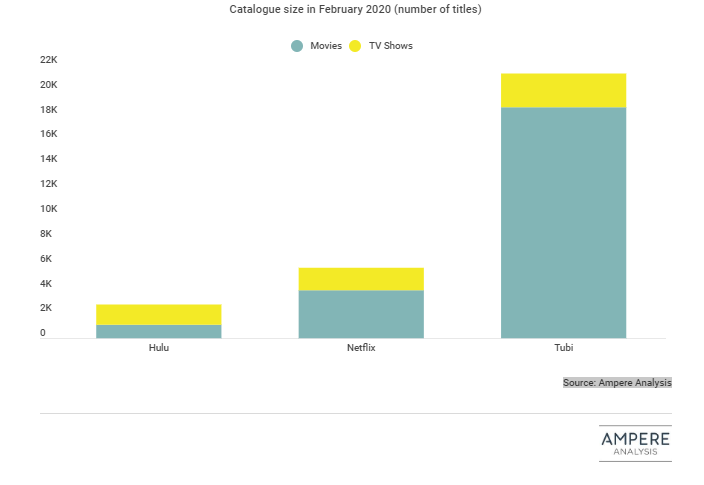
 Analysis of Internet search activity confirms that the COVID-19 lockdown has further encouraged consumers to seek out free video content. Google trend data over the last 12 months, to end April 2020, shows that the search terms “free movies” and “free shows” reached a peak in the last month.
Analysis of Internet search activity confirms that the COVID-19 lockdown has further encouraged consumers to seek out free video content. Google trend data over the last 12 months, to end April 2020, shows that the search terms “free movies” and “free shows” reached a peak in the last month.
AVoD (advertising-supported Video-on Demand) services especially, as well as free trial access to paid-for services, have become a ready source for such content. The AVoD business model works well in consumers’ hunt for greater volumes of content. Indeed, crucial to the strategy is the provision of a large and diverse catalogue to drive consumption and increase the volume of commercials being watched.
The term “Tubi” also reached a peak in April 2020. The AVoD service Tubi, acquired by Fox in March 2020, recorded its largest usage growth to date in March 2020, and reported more than a 50% increase in new signups. Its deep catalogue would appear to be an asset here: Ampere’s Analytics tracking data shows that as of February 2020, Tubi had nearly five times as many movies available to watch in the US as SVoD rival Netflix.
The longer-term prospects for AVoD services are mixed. A recession-driven decline in advertising spend in the wake of the pandemic will likely slow the growth of the AVoD sector overall, yet the anticipated economic pressure on consumers may also represent a watershed moment for free-to-access content. As overall disposable income is reduced, some consumers may disengage from Pay VoD and TV services, instead switching their viewing to free-at-the-point-of-consumption AVoD. Services such as Tubi, Pluto and Peacock, along with services with ad-supported tiers like Hulu, could yet benefit from this shift with increased sign-ups and viewership.
Source: Ampere Analysis
